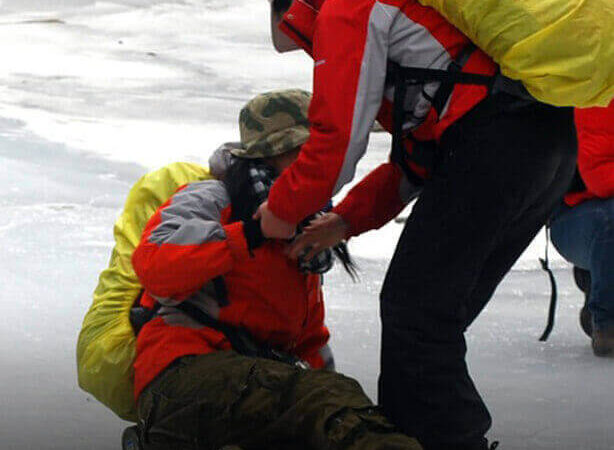Thousands of people in the state get hurt in slipping or tripping accidents every day, leading to tens or even hundreds of thousands of dollars in damages. While an awkward landing can lead to injuries like broken bones and ligament tears all across the body, the area that most commonly suffers harm in these incidents is the ankle.
Suddenly losing your footing can put a lot of stress on your ankles in a very short period of time, potentially leading to a number of different injuries depending on how and where you end up falling. Here are some of the most common ankle injuries sustained from slip and fall accidents, any of which could justify civil litigation if they require professional medical attention.
Ligament Strains and Sprains
Even if you manage to stay upright after slipping or tripping, the ligaments connecting the tibia and fibula bones in the leg to the talus bone in the ankle can still stretch and torque, sometimes resulting in painful injuries. Mild tension in the ankle ligaments may lead to a Grade 1 sprain, which is characterized by some swelling and soreness but generally heals on its own in two to four weeks without professional medical intervention.
Conversely, a partial tear in an ankle ligament constitutes a Grade 2 sprain, which may not heal completely for six to eight weeks. Grade 3 sprains involve complete ligament tears that are extremely painful, produce noticeable bruising and swelling, and generally require three to six months of recovery time on crutches or in a wheelchair.
Certain types of ligament injuries can be even more severe. For example, if the Achilles tendon at the back of the ankle is torn or severed, the recovery process may require surgery and several months of time spent off the impacted foot. Seeking civil recovery can be especially important following slip and fall accidents that lead to these kinds of ankle injuries.
Bone Fractures
The most common type of ankle injury that slip and fall victims suffer from is a break in the lateral malleolus, which is a rounded part of the lower fibula on the outside of the ankle. On the interior of the ankle, the medial malleolus is a similar portion of the lower tibia, which is likewise susceptible to fractures during a hard fall.
Falls that result in a direct impact to the front or top of the ankle may lead to what is known as a plafond or pilon fracture, which occurs in the center of the lower tibia. Finally, severe impacts or falls may create trimalleolar ankle fractures, which involve fractures in the lateral, medial, and posterior malleolus areas of the fibula and tibia.
The severity of a fracture from a slip and fall may depend on whether the fracture is nondisplaced or displaced. In a nondisplaced fracture, a break has occurred in one or more bones, but the bones themselves are still largely in their correct normal positions, meaning that the fractures can generally heal over time without extensive medical intervention.
Displaced fractures, on the other hand, result in pieces of fractured bones becoming separated or ending up in the wrong place, prolonging the treatment process and potentially even necessitating surgery to correct.
An Attorney Could Help with Your Claim Regarding Common Ankle Injuries Sustained from Slip and Fall Accidents
Regardless of how severe an ankle injury sustained from a slip and fall accident is, comprehensive civil recovery may be possible with help from a dedicated personal injury attorney. Contact the firm today to get started on your claim.


